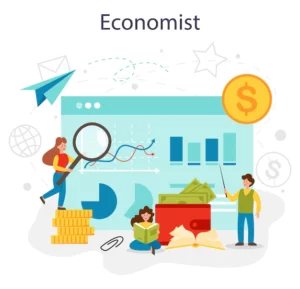Question: What is development?
Answer: It is a comprehensive term that includes an increase in real per capita income, improvement in the living standard of people, reduction in poverty, etc.
Question: Mention any two developmental goals of a landless rural labourer.
Answer:
- More days of work and better wages.
- Quality education for his children.
Question: Mention any two developmental goals of a girl.
Answer:
- Gender equality
- Girls empowerment
Question: What may be developed for one may not be for the other. It may even be destructive to others. Give one example.
Answer: The construction of a dam may be good for an industrialist as he will get more electricity, but the construction of a dam submerges’ the land and disrupts the lives of displaced people.
Question: Mention any two developmental goals of people other than income.
Answer:
- Equal treatment
- Respect of others
Question: Mention any two developmental goals of rural women.
Answer:
- Dignity in the household.
- A safe and secure environment.
Question: What is national development? [CBSE 2014]
Answer: National development is a comprehensive term that includes improving living standards. Of the people, increase in per capita income, providing social amenities like education, medical care, social services, etc., to the country’s citizens.
Question: Mention any two national development goals of India.
Answer:
- Corruption-free society.
- High per capita income.
Question: Which is the most important attribute for national development?
Answer: National income or per capita income of the nation.
Question: ‘For comparing countries, total or national income is not useful. Give reason.
Answer: Since countries have different populations, comparing total income will not tell us what an average person is likely to earn.
Question: What is average income or per capita income? [CBSE 2014]
Answer: When the total national income is divided by the total population, it is called the per capita income.
Per Capita Income = National Income / Population
Question: What is the most important component for comparing different countries? [CBSE 2010, 12]
Answer: Per capita income.
Question: Which criteria are used by the World Bank to classify different countries?
Answer: Per capita income.
Question: Which countries have been categorized as rich according to the World Development Report? [CBSE 2014]
Answer: Countries with a per capita income of US $ 12276 per annum and above in 2010 are called rich countries.
Question: According to World Development Report, which countries have been categorized as low-income?
Answer: Countries with a per capita income of US $ 1005 or less are called low-income countries.
Question: Under which category has India been placed by the World Bank Development Report?
Answer: As India’s per capita income is low, low middle-income countries are less than JUS $ 1005. or less.
Question: What are developed countries according to World Development Report?
Answer: All the countries, excluding countries of the Middle East and certain other small countries that have per capita income of US $ 12276 per annum or above, have been termed as developed countries.
Question: What is Infant Mortality Rate? [CBSE 2009, 2013 (D)]
Answer: It indicates the number of children that die before one year as a proportion of 1000 live children born in that particular year.
Question: What is Literacy Rate? [CBSE 2009 (D)]
Answer: It measures the proportion of the literate population in the seven and above age group.
Question: What is the Net Attendance ratio? [CBSE 2014]
Answer: It is the total number of children of the age group 6-10 attending school as a percentage of the total number of children in the same age group.
Question: What is Gross Enrolment Ratio?
Answer: The enrolment ratio for primary, secondary, and higher education.
Question: Which Indian state has the lowest Infant Mortality Rate?
Answer: Kerala.
Question: Why Kerala has a low Infant Mortality Rate? [CBSE 2008, 2013 (F)]
Answer: Kerala has low IMR because :
- It has a very high literacy rate, and literate people care for their children better than illiterate people.
- Literate people also have a high earning capacity to afford necessities for their children.
Question: Mention any two things that money cannot buy.
Answer:
- Peace
- Freedom
Question: What is Public Distribution System?
Answer: It is a food security program under which government provides foodgrains and other essential items to the poor at an affordable price.
Question: What is Human Development Index?
Answer: It is an index prepared by the World Bank Under which all the nations of the world are indexed or ranked according to their performance in various parameters like per ‘—’ capita income, life expectancy, literacy rate, etc.
Question: What are the three components of the Human Development Index?
Answer:
- Per Capita Income
- Life Expectancy
- Literacy Rate
Question: What is India’s rank according to the 2013 HDI?
Answer: 136
Question: Mention any two parameters where Sri Lanka has scored over India in HDI.
Answer:
- Per capita income
- Literacy rate
Question: Define life expectancy. [CBSE 2013]
Answer: Average expected length of life of a person at the time of birth.
Question: What is life expectancy in India?
Answer: 65.8 years
Question: What is Sustainable Development?
Answer: Sustainable development is that process of economic development which aims at maintaining the quality of life of both the present and the future generations without harming the natural resources and environment.
Question: What are non-renewable resources? Give one example.
Answer: “Non-renewable resources are the natural resources that cannot be replaced at all or within a reasonable time.” Fossil fuels such as oil, gas, and coal are non-renewable resources—these resources accumulated over millions of years.
Question: Name the region of the world which has large crude oil reserves.
Answer: Middle East.


